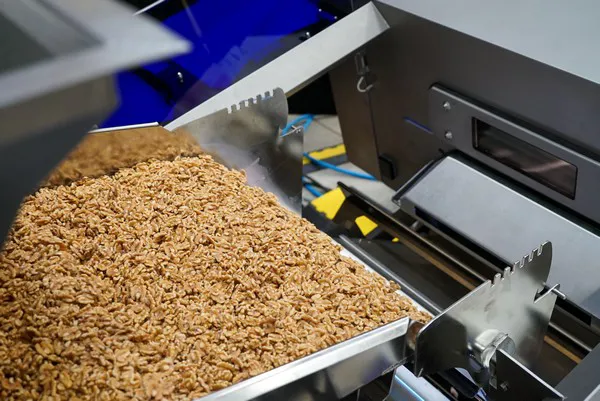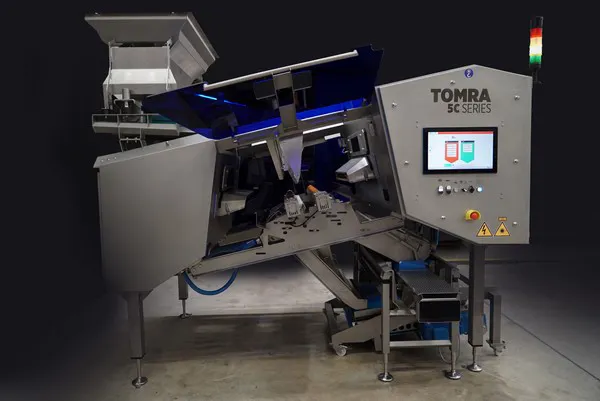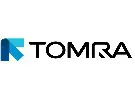Nut processors require different sorting solutions to perform various tasks as they shell, peel, and process their products. At first, sorting machines take care of fairly basic tasks. As nuts move up the production line, sorters become more sophisticated and specialized. The almond process is a good example of this.

“The first challenge that shellers typically face with almonds is the removal of foreign material and the almond's outer and inner shells. The most suitable machine for this task is the TOMRA 5C (and in some cases the TOMRA 3C) which is capable of sorting more than 16 tons of nuts per hour. It eliminates foreign materials, including shells, scales, stones, sticks, and all the most common defects, with an efficiency of more than 99.5%.
“The TOMRA 5X sorter employs the latest imaging and X-ray technology to detect and eject foreign materials such as stones, glass, clods, and high-density plastics.”
“The relentless search for impurities continues in the next step, in which the sorter searches for smaller, less dense foreign materials. The machine that performs this task is the TOMRA 5C, a premium optical sorter developed specifically for frozen nuts and vegetables.”
Checking biometric characteristics
“The TOMRA 5C is used again in the almond processing third sorting stage. Equipped with two biometric signature identification scanners (BSI+), this machine shows its remarkable ability to find defects that are almost invisible and difficult to see. This includes insect damage, micro-holes, rubbers, mold, brown spots, and dehydrated product.”
“TOMRA's unique BSI+ technology scans materials with visible and near-infrared (NIR) spectrum wavelengths. It instantly compares the biometric characteristics of objects with a database to determine whether they should be accepted or rejected. This technology can also detect and reject other critical nut defects, such as rancidity, decay, mold, or allergens.”

Finding the deadly toxin hidden in the product
The most challenging threat faced by nut processors may be hidden within the nuts. This threat is Aflatoxin, a natural mycotoxin that is important to eliminate. This toxin, which is produced by certain Aspergillus molds (fungi) in plants, such as corn and cereals, or more commonly in soil, usually develops in the field.”
“The special design incorporated into the TOMRA 5C machine allows us to identify the extremely low intensity of light reflected by aflatoxin-producing mold in peanuts and eliminate them."
For more information:
Tomra
www.tomra.com
